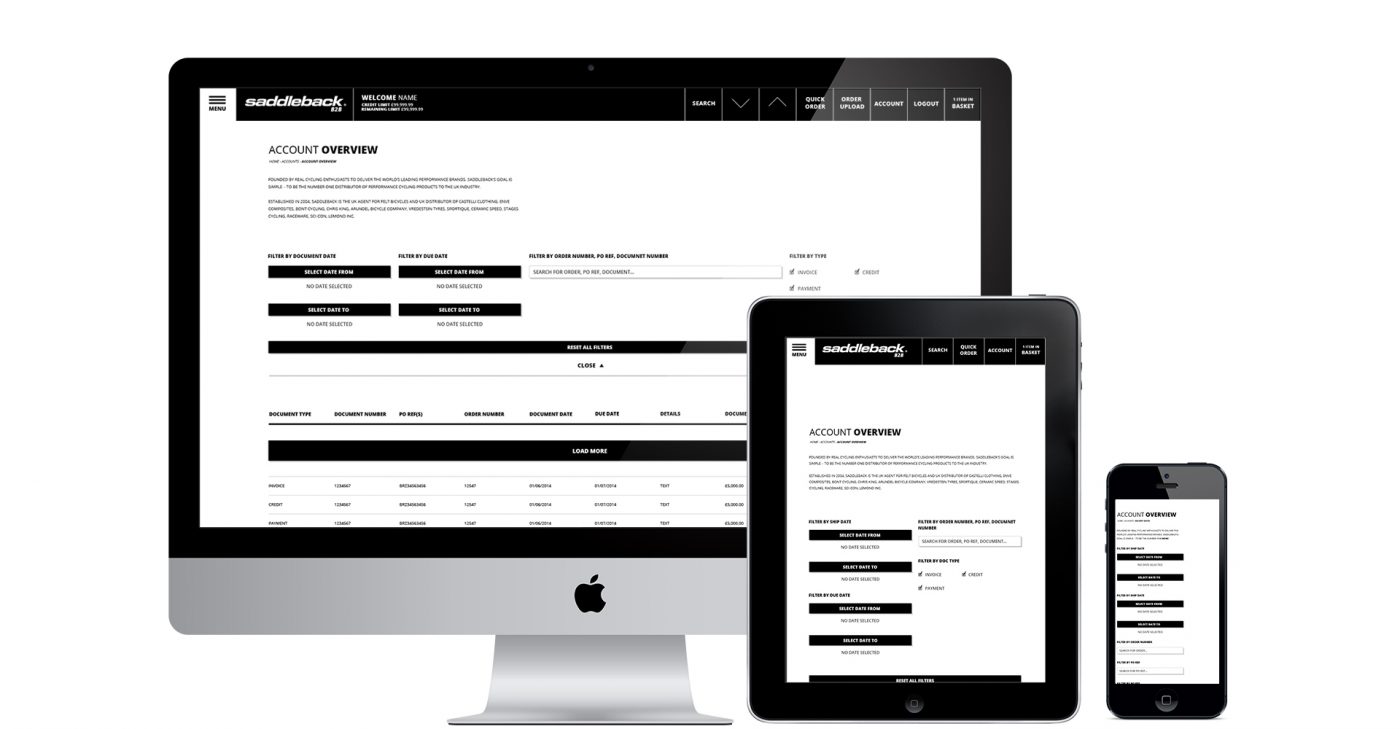Reading Time: 3 minutes
Our recent B2B Benchmark Guide provides key analytical data and insight into how customers interact with B2B ecommerce sites. The opportunities within B2B over the next 12 months are substantial, the question on every B2B Marketer’s mind is ‘can my platform support my future growth plans?’.
This blog focuses on the four investments we have identified as priorities for 2016. If you have already invested in these areas, fantastic! We recommend reviewing our B2B Benchmark Guide to identify additional areas for investment. However, if your platform does not support these features or they are not part of your plan to date get in touch to find out how we can help you.
1. Ensure your website is responsive.
Having a responsive or mobile optimised website is no longer a luxury, it is a necessity. Our analytical averages have shown that almost 20% of website traffic is from mobile or tablet devices – the simple fact is that, if these visitors don’t receive an optimised experience they will likely leave your website and purchase from a competitor that offers a better experience.
Do people often bounce when visiting your site on a mobile device?
Is your mobile conversion lower than desktop?
Do tablet users abandon their baskets?
If your existing website is not mobile-friendly we highly recommend investing in a new, responsive solution or separate mobile/tablet websites.
2. Integrate with your stock system to offer product updates in real-time.
When asked ‘How important are the following when making work-related purchases online’ 56% of people asked stated ‘real-time inventory information’. This highlights that one of the most important information requests for B2B customers is stock levels, more importantly, customers desire real-time updates. If you have not already, consider integrating your ecommerce system with your stock system to ensure that all information can be passed and presented in real-time.
This has two benefits:
1. Customers are much more likely to make a purchase as they are being given the information they desire
2. Customers are much less likely to become frustrated when part or all of their order cannot be fulfilled on time due to low stock levels
3. Present account specific pricing.
Recent research suggests that pricing optimisation is one of the most important factors for B2B customers when making a purchase online. The vast majority of B2B retailers offer account specific pricing based on a number of factors such as annual spend or size of business.
Does your platform allow customers to see their specific pricing on your website?
If the answer is no, we would recommend speaking to your web development agency to introduce this functionality. Alternatively, perhaps it’s time to invest in a new ecommerce platform?
4. Offer enhanced search functionality.
60% of B2B customers state out of all website functionality they would most like enhanced search. Furthermore, our research shows over half of all revenue comes from just 11% of sessions that include search. In short, customers who use the on-site search function spend more money – but only if that search function provides customers with the information they are looking for. A poor search experience can have a negative effect on sales as customers become frustrated or assume you do not stock the items they are looking for.
Do you know what people type into the search box on your site?
Do your search results present the right products for each customer?
Do people who use the search box go on to make a purchase?
Our final recommendation for investment in 2016 is an enhanced search function. Most ecommerce platforms offer a search feature as standard, but you may want to consider investing in additional features/design to enhance that function even further, for example, allowing customers to search by product code or presenting a drop-down feature showcasing relevant products.


